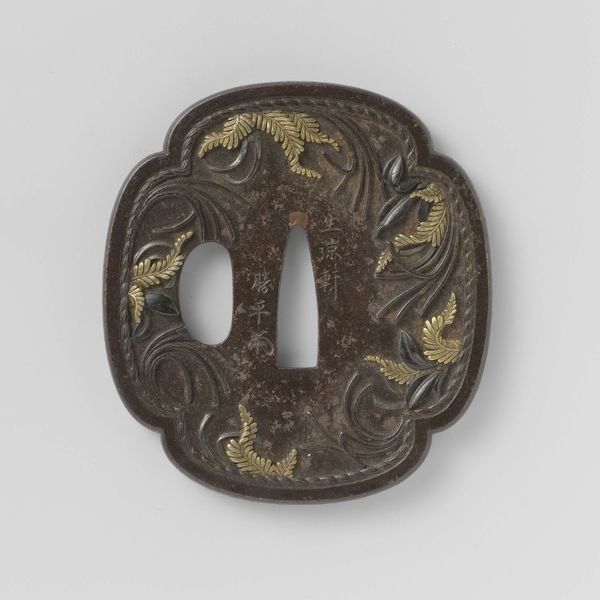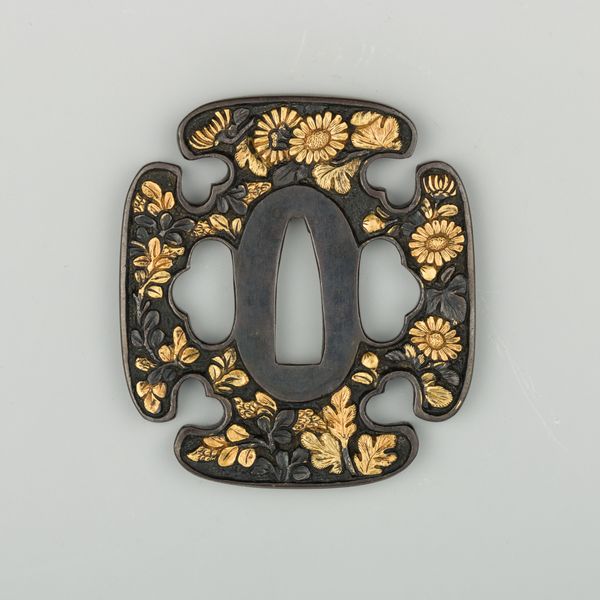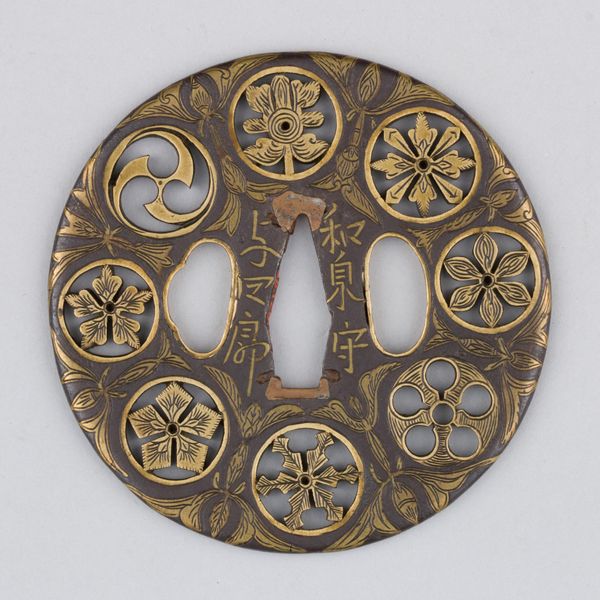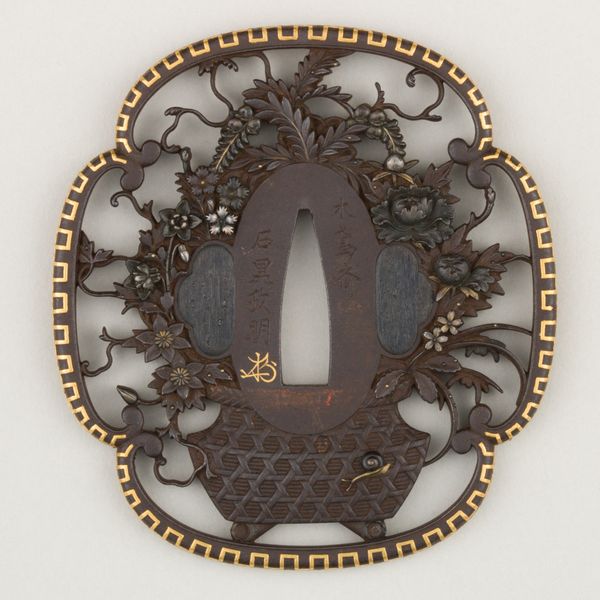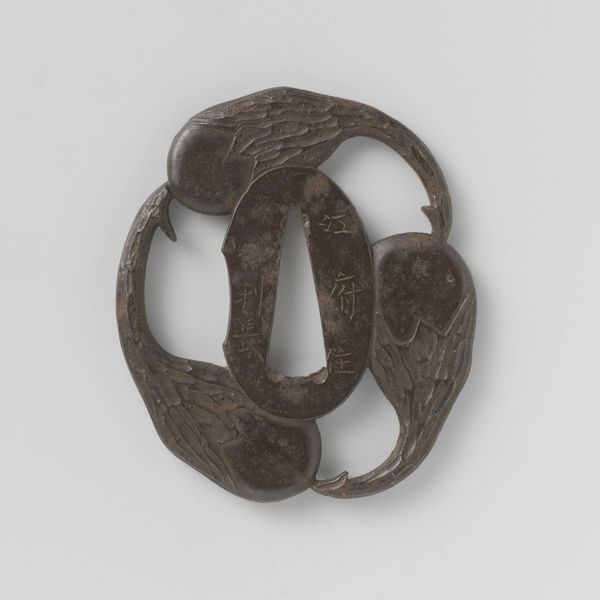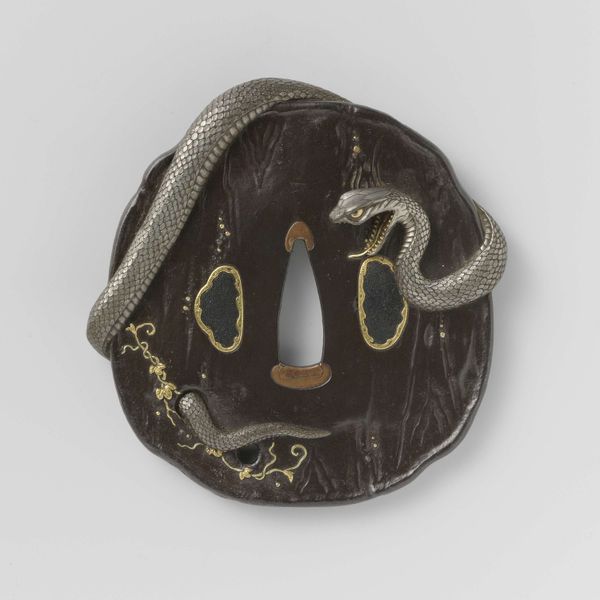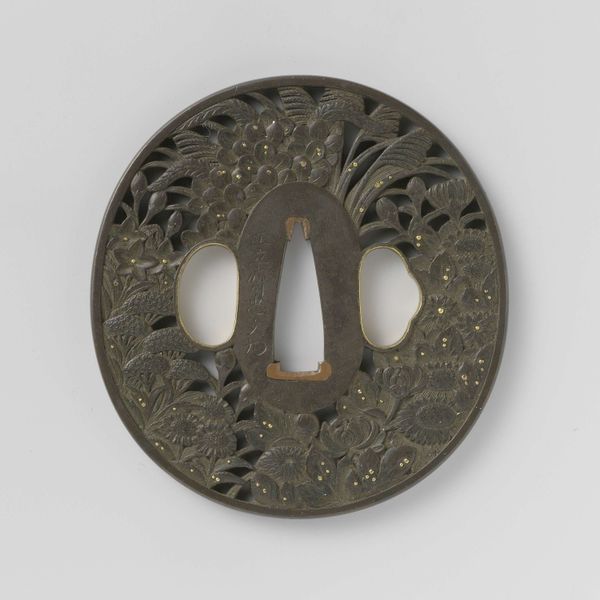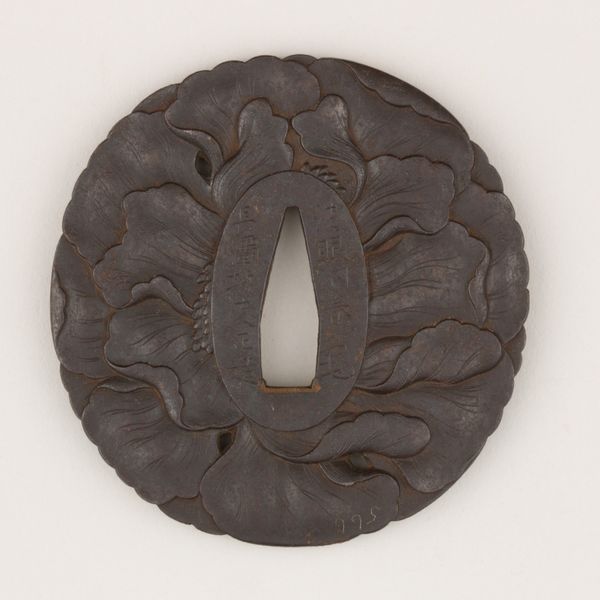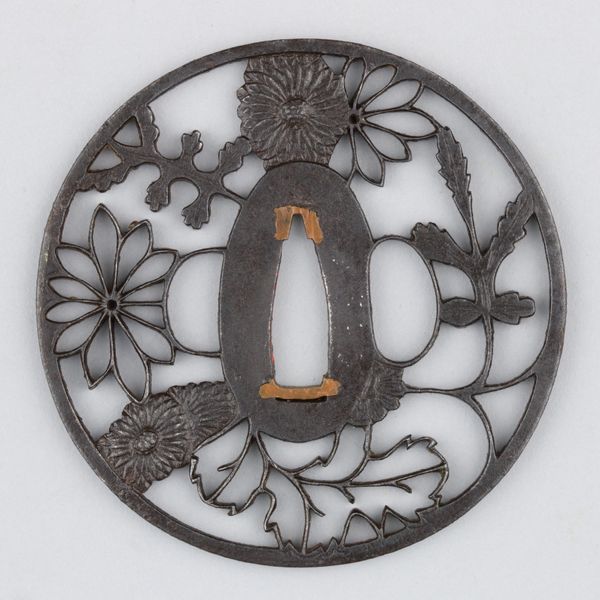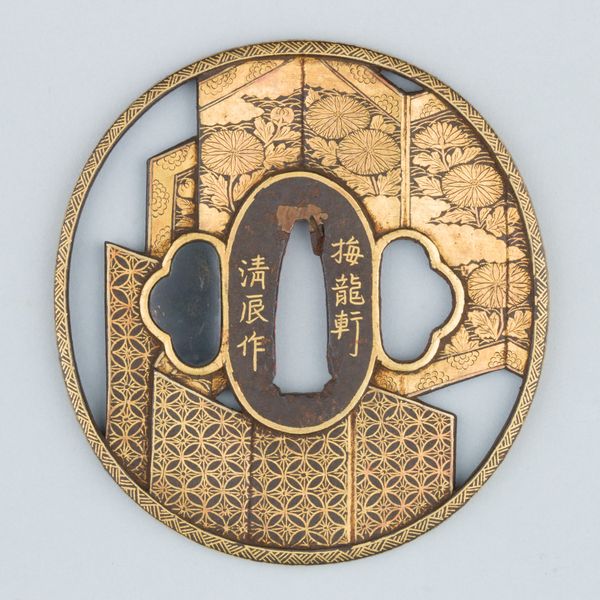
唐草図鐔 Sword Guard (<i>Tsuba</i>) 19th century
0:00
0:00
metal, engraving
#
metal
#
asian-art
#
decorative-art
#
engraving
#
sword
Dimensions: L. 3 1/4 in. (8.3 cm); W. 3 1/4 in. (8.3 cm); thickness 3/16 in. (0.5 cm); Wt. 4.8 oz. (136.1 g)
Copyright: Public Domain
Editor: Here we have a 19th-century metal sword guard, or Tsuba, by Washida Mitsunaka. The delicate silver engraving of leaves gives it a stunning ornamental beauty, like a piece of wearable art. How do you see this functioning in its cultural moment? Curator: What strikes me is its function, almost completely obscured by the artistry. We have to remember the samurai culture that necessitated these objects. Though decorative, it played a crucial role in protecting the hand, signifying status, and embodying the martial values of the samurai class. It served as both a personal statement and a representation of their societal position. Do you think the emphasis on the decorative elements undermined its function? Editor: That's interesting! I hadn’t thought about status so much, and instead thought the embellishment softened the deadly role of a sword. Curator: It’s more nuanced. Consider the political context; by the 19th century, the Edo period was nearing its end, and while peace prevailed, samurai identity remained paramount. Embellishing practical objects became a way to negotiate the tensions between tradition and a changing social order. This sword guard is more than just decoration. It is a statement about identity and power within a rigid social hierarchy. Who got to create, use, and possess pieces like these? That says a lot. Editor: So, it’s like these intricate designs acted as a visual code, speaking volumes about the owner's status and place within that society? It is definitely food for thought, especially since museums now make these pieces so accessible to everyone. Curator: Exactly. And that shift in accessibility – from a symbol of exclusive power to a public object of admiration – reshapes our understanding and interaction with it. We move away from martial history and embrace aesthetic appreciation. Editor: I’ll definitely see Tsubas differently now. Thanks!
Comments
No comments
Be the first to comment and join the conversation on the ultimate creative platform.
